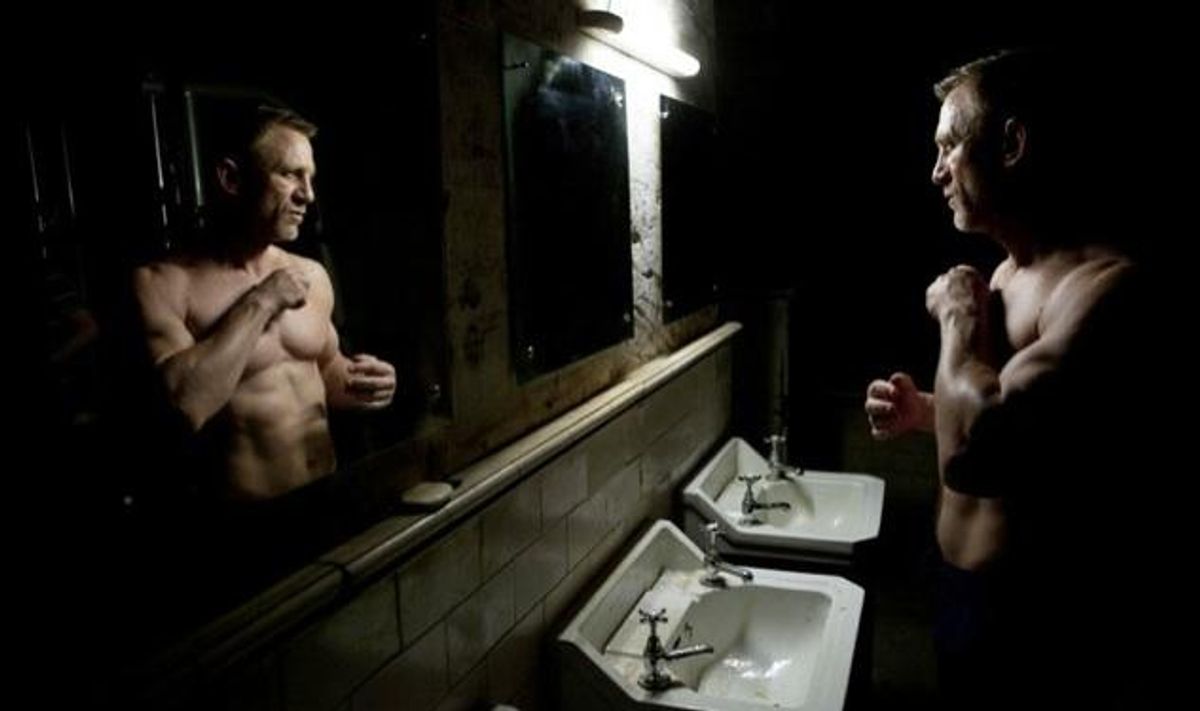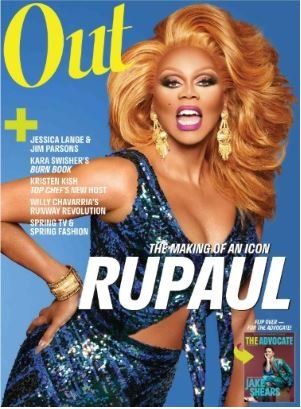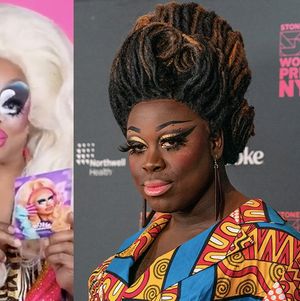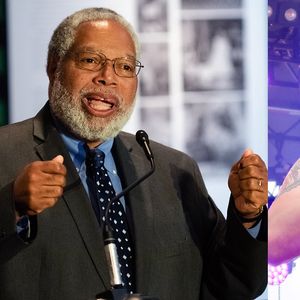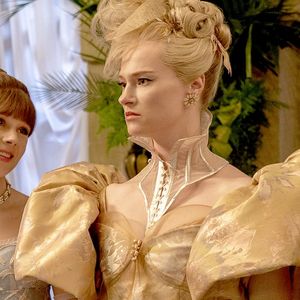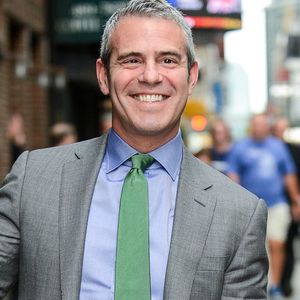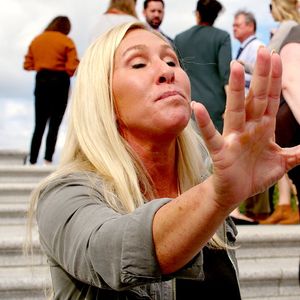Daniel Craig is the poster-boy for a "new sex appeal" and it's causing columnist Richard Cohen "pain." In a Washington Post column last week, Cohen expressed anxiety over Craig's sleek and muscly physique in the new James Bond film, Skyfall, critiquing him for "chasing youth on a treadmill," instead of "relaxing" and "enjoying" the "prime of his life." Craig's body consciousness says something to Cohen "about our culture that [he does] not like." While we can all agree that body image issues are severely dangerous and pervasively problematic, Cohen's article shockingly omits the primary victims of this epidemic: women.
Now, I do not intend to tear Cohen apart for this obvious mistake: Alyssa Rosenberg of Think Progress and Max Read of Gawker have already done that, and quite effectively. However, I do think it's worth exploring what led to his egregious oversight, and what that says about our culture.
Understanding the anxiety that Craig's hard-earned body evokes in Cohen, may help us understand the absence of women in the column. Cohen seems to view Craig's brazen willingness to present as an object of desire as "unmanly," perhaps even "womanly," which is largely considered the very worst thing a man can be in our society--hence the anxiety.
Cohen suggests that Craig's efforts to be desirable are less than "manly," by contrasting him with a few of his all-time movie heroes: Cary Grant in North by Northwest, Gary Cooper in High Noon, and Humphrey Bogart in Casablanca and The Maltese Falcon. He describes each as being "of a certain age," lacking muscles, but still getting the girl (all of 23) due to experience, strength of character, and aged wisdom." In other words, unlike the young women in these films (and unlike Craig in Skyfall), Cohen's ideal men don't have to do the work it entails to be objects of desire. They exist outside of the desiring gaze of women (or men), doing all the gazing themselves, and this, he believes, makes them powerful, "manly," and desirable.
Cohen's "manly" fantasy--the kind of character he likes to dream himself into--is a guy whose desired object simply falls at his feet, without him ever having to lift a bar bell; and he's not alone in this. After all, it's this shared fantasy that continues to drive massive sales of hetero-porn (or rather, porn designed for straight men), often featuring schlubby looking guys, many "of a certain age," having their way with much younger, women, who have obviously worked extremely hard on their appearance.
However, it's also the same fantasy that perpetuates ideas of women as precarious objects in our culture; objects to be gazed upon, desired, consumed, penetrated--perhaps even invaded or attacked. The fantasy of woman as object, puts pressure on all women to contort themselves to be desirable, and to conceal their own desiring gaze.
Hollywood and the porn industry (both largely run by straight men) rarely (if ever) serve up the inverse of this fantasy--which would be powerful (possibly overweight) women "of a certain age" ravaging 19-year-old dudes with chiseled frames. Traditionally, the major, big-selling films featuring ripped men--who hit the gym as regularly as Daniel Craig did for Bond--are gay porn.
So, in identifying with Craig's Bond, Cohen would have to recognize in himself an experience he likely believes is reserved for gay men and women; yes women, the very people he somehow failed to mention in his article. To include the enduring conundrum of female body image in his column would have possibly been too threatening, because it would mean acknowledging the real fear, the fear that dare not speak it's name: identifying with a woman--or a man who seems or behaves "like a woman".
In a 1993 op-ed for the New York Times, psychoanalyst Ken Corbett illustrated a man's fear of being an object of desire, writing, "He anxiously pictures himself wanted in a way that most men feel only a woman should be wanted". Perhaps Cohen fears his own potential to fantasize about the current James Bond for the same reason.
If this is the case, It's no wonder then that he has redirected his anxieties onto Daniel Craig (who he sees more as a Bond "girl" to be penetrated, rather than a penetrating Bond). He criticizes Craig's work-out habits and hard body, and as Corbett explains how male fear of objectification can lead to aggression, Cohen seems compelled to "turn the object of desire" into a "threatening object."
It's too bad that in addition to overlooking the plight of women as objects, Cohen also seems to miss the tremendous gift Daniel Craig offers by unabashedly objectifying himself onscreen. Craig (a big supporter of rights for women and the LGBT communities), allows us to dream of an equal playing field for women and men. In The Girl with the Dragon Tatoo, for example, Craig found almost every curve of his muscly body scrutinized by director David Fincher's lens. Fincher encouraged his audience (including straight men) to gaze at Craig's figure the way Rooney Mara's character does--a young woman existing outside of objectification, struggling to possess, and repossess her mind, body, and desires.
Surely a punishing quest for a perfect frame can be unhealthy and very dangerous for the mind and body, but so too can the pervasive fear of male objects--which maintains female objectification as a norm, forces men to reject aspects of themselves, and drives all of us to criticize/punish those who break "the rules". Nervy performers like Daniel Craig inspire us to imagine people of different genders, and gender expressions, having the freedom to desire and be desired without anxiety or fear; Richard Cohen's or our own.
Mark O'Connell, LCSW, is a New York City-based psychotherapist in private practice. His website is MarkOConnellTherapist.com
